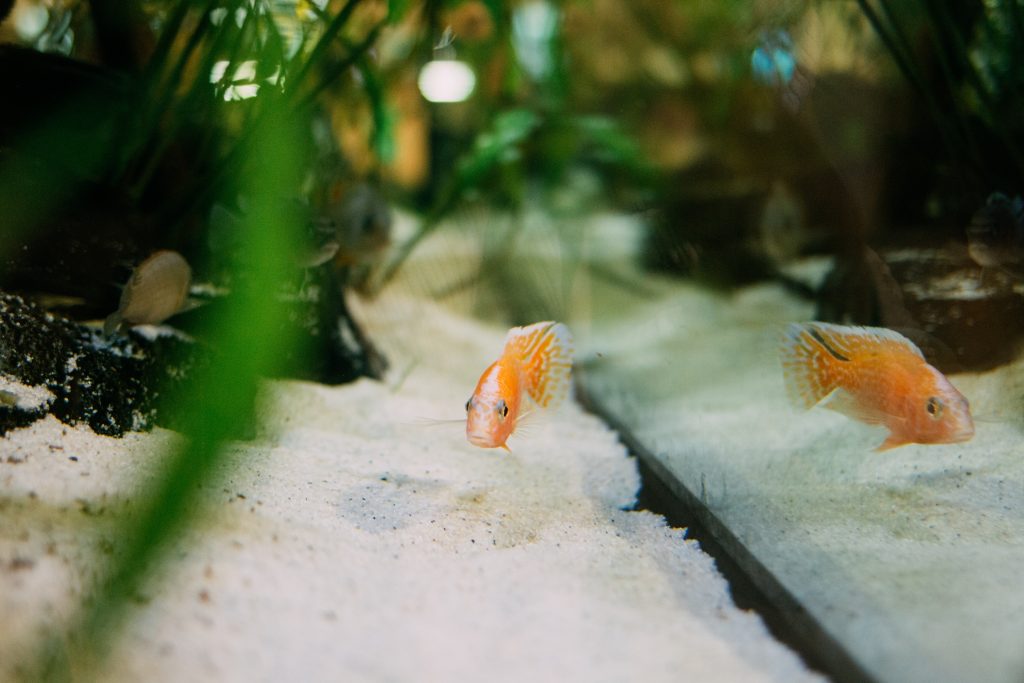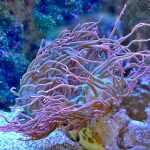Aquarium sand is an essential component of any aquarium. It not only enhances the aesthetic appeal of the aquarium but also provides a natural environment for the fish to thrive. However, over time, the sand can accumulate debris and waste material, which can be harmful to the fish and other aquatic creatures. Therefore, it is essential to clean the aquarium sand regularly.
Cleaning aquarium sand may seem like a daunting task, but it is relatively easy if done correctly. There are several ways to clean aquarium sand, including using a siphon or a gravel vacuum, agitation of the sand so that the filter picks up the residue, and putting sand cleaning pets in the tank. Each method has its advantages and disadvantages, and the choice of the method depends on the type of sand and the size of the aquarium. It is crucial to choose the right method to ensure that the sand is cleaned effectively without harming the fish or other aquatic creatures.
In this article, we will discuss the different methods of cleaning aquarium sand and provide step-by-step instructions on how to clean aquarium sand effectively. We will also discuss the benefits of cleaning aquarium sand and the importance of maintaining a clean aquarium. Whether you are a seasoned aquarium owner or a beginner, this article will provide you with all the information you need to keep your aquarium sand clean and your fish healthy.

Understanding Aquarium Sand
Aquarium sand is a popular substrate choice for fish tanks. It is aesthetically pleasing, affordable, and practical. Sand is especially useful when there are bottom-feeding or burrowing inhabitants in the tank.
Types of Aquarium Sand
There are different types of aquarium sand available in the market. It is important to choose the right type of sand for your aquarium based on the type of fish and plants you have. Here are some common types of aquarium sand:
- Play sand: This type of sand is commonly used in children’s sandboxes. It is inexpensive and readily available. However, it can be high in silica, which can cause harm to some fish species.
- Pool filter sand: This type of sand is used in swimming pool filters. It is affordable and has a uniform grain size. It is also safe for most fish species.
- Aragonite sand: This type of sand is made from calcium carbonate. It is a popular choice for marine aquariums as it helps to maintain a stable pH level. (This is what we use)
- Coral sand: This type of sand is made from crushed coral. It is commonly used in marine aquariums as it helps to maintain a stable pH level and provides a natural habitat for marine organisms.
Benefits of Aquarium Sand
Aquarium sand provides several benefits to your fish tank. Here are some of the benefits:
- Aesthetically pleasing: Sand provides a natural and attractive look to your aquarium. It comes in different colors and grain sizes, allowing you to customize the look of your tank.
- Natural habitat: Sand provides a natural habitat for bottom-dwelling fish and invertebrates. It allows them to burrow and hide, which reduces stress and promotes natural behavior.
- Biological filtration: Sand provides a surface area for beneficial bacteria to grow, which helps to break down waste and maintain a healthy environment for your fish and plants.
Cleaning Aquarium Sand
Cleaning aquarium sand is an essential part of maintaining a healthy and clean environment for your fish and plants. It is recommended to clean the sand once a month or as needed. Here are some tips for cleaning aquarium sand:
- Use a siphon to remove debris and waste from the sand.
- Consider replacing the sand every few years to prevent buildup of harmful chemicals and waste.
By understanding the different types of aquarium sand, the benefits it provides, and how to clean it properly, you can provide a healthy and natural environment for your fish and plants.


Choosing the Right Aquarium Sand
When it comes to choosing the right aquarium sand, there are a few things to consider. The type of sand you choose will not only affect the aesthetics of your aquarium but also the well-being of your aquatic pets. Here are some factors to keep in mind while selecting the right aquarium sand:
Particle Size
The particle size of the sand is an important factor to consider. Sand with larger particles is easier to clean and maintain but may not be suitable for all types of fish. For example, fish that dig or burrow in the sand require finer sand to prevent injury to their gills. On the other hand, larger particles may be ideal for fish that prefer a rocky substrate.
Color
The color of sand can affect the overall look of your aquarium. There are various colors of sand available, ranging from natural beige to black. It is important to choose a color that complements the color of your fish and other aquatic plants. For example, black sand can make the colors of your fish pop, while beige sand can create a natural and serene environment.
Material
The material of the sand can also affect the well-being of your aquatic pets. Some types of sand can alter the pH levels of the water, which can be harmful to certain species of fish. It is important to choose sand that is specifically designed for aquarium use and has been tested for safety. Some popular materials for aquarium sand include silica, aragonite, and crushed coral.
Quantity
The quantity of sand you need depends on the size of your aquarium and the depth of the sand bed you desire. A general rule of thumb is to have a sand bed that is at least 2 inches deep. This not only provides a natural environment for your fish but also allows beneficial bacteria to thrive and maintain a healthy ecosystem.
Overall, choosing the right aquarium sand is an important decision that affects both the aesthetics and well-being of your aquatic pets. By considering factors such as particle size, color, material, and quantity, you can create a beautiful and safe environment for your fish to thrive in.
Preparation for Cleaning
Before cleaning aquarium sand, one needs to prepare for it properly. Here are some steps to follow:
- Turn off all electrical appliances: Turn off the filters, heaters, and all pumps. It is important to ensure that no electrical appliance stays in the tank while cleaning it.
- Remove plants and decorations: Remove all plants and decorations from the tank. If one prefers, they can clean around the decorations instead of removing them.
- Prepare a large bucket: Prepare a large bucket that is big enough to hold all the sand and to fully submerge the sand in water.
- Fill the bucket with water: Fill the bucket with water and swirl the sand around with your hand. This will help to loosen any debris or waste trapped in the sand.
- Siphon the water: Put the hose end of the siphon in a large bucket positioned below the tank. Lower the suction end of the siphon into the water, being careful to avoid any small fish. Pinch the manual pump five times or so to start the water flowing into the bucket.
- Clean the sand: Hover the suction nozzle over the surface of the sand. Work methodically across the sand to pick up all the debris.
By following these steps, one can prepare for cleaning aquarium sand properly.
Maintaining Clean Aquarium Sand
Maintaining clean aquarium sand is essential for the health and well-being of aquatic pets. Dirty sand can lead to the accumulation of harmful bacteria and toxins, which can cause various health problems for fish, snails, and other aquatic creatures. Here are some tips to help keep aquarium sand clean:
Regular Cleaning
The easiest way to keep aquarium sand clean is by performing regular cleaning. This involves using a gravel vacuum to remove debris and waste from the sand. The gravel vacuum works by siphoning water out of the tank and through a tube, which also sucks up any debris and waste that has settled on the sand. By performing regular cleaning, you can prevent the buildup of harmful bacteria and toxins in the sand, which can help keep your aquatic pets healthy.
Use of Sand Sifter
Another way to keep aquarium sand clean is by using a sand sifter. This is a small device that can be placed on the sand and used to sift through the sand, removing any debris or waste that has settled on it. Sand sifters are especially useful for removing uneaten food, which can quickly decompose and lead to the buildup of harmful bacteria and toxins in the sand.
Proper Water Circulation
Proper water circulation is also essential for maintaining clean aquarium sand. A lack of water circulation can cause debris and waste to settle on the sand, which can lead to the buildup of harmful bacteria and toxins. To ensure proper water circulation, it is important to have a good filtration system in place. This can help remove debris and waste from the water, preventing it from settling on the sand.
Avoid Overfeeding
Overfeeding can also contribute to the buildup of harmful bacteria and toxins in aquarium sand. Uneaten food can quickly decompose and lead to the accumulation of waste and debris on the sand. To prevent this, it is important to feed aquatic pets only what they need and to remove any uneaten food from the tank as soon as possible.
By following these tips, aquarium owners can help maintain clean and healthy sand in their tanks. Regular cleaning, the use of sand sifters, proper water circulation, and avoiding overfeeding can all contribute to a healthy and thriving aquatic environment.
Common Mistakes to Avoid
Cleaning aquarium sand can be a daunting task, especially for beginners. However, there are some common mistakes that people make that can make the process even more difficult. Here are a few things to avoid when cleaning your aquarium sand:
Not Turning off Filters and Pumps
One of the most common mistakes people make when cleaning their aquarium sand is not turning off the filters and pumps. This can cause the water levels to lower and the filters to run dry, which can damage them. Before starting the cleaning process, make sure to turn off all filters and pumps to prevent any damage.
Removing Too Much Water
Another mistake people make is removing too much water from the tank. While it’s important to remove some water to clean the sand, removing too much can be harmful to the fish and other aquatic life in the tank. A good rule of thumb is to remove no more than 25% of the water at a time.
Conclusion
Cleaning aquarium sand is an essential part of maintaining a healthy aquarium. It is important to clean the sand regularly to remove debris, uneaten food, and fish waste. This will prevent the buildup of harmful toxins and bacteria, ensuring a healthy environment for the fish and other aquatic creatures.
In addition to cleaning the sand, it is also important to maintain the overall cleanliness of the aquarium. This includes regularly changing the water, cleaning the filter, and removing any dead or decaying coral or animals.
Overall, cleaning aquarium sand is a simple and straightforward process that can be easily incorporated into a regular aquarium maintenance routine. By following the proper cleaning procedures and maintaining a clean and healthy aquarium environment, hobbyists can enjoy the beauty and tranquility of their aquatic pets for years to come.
FAQ’s
How do I clean fish poop from aquarium sand?
Fish poop can accumulate in aquarium sand over time, making it look dirty and unpleasant. The best way to clean fish poop from aquarium sand is to use a gravel vacuum. This device uses suction to remove debris from the sand without disturbing the sand itself. Simply place the end of the vacuum in the sand and move it around to suck up the poop and other debris.
What is the best way to clean aquarium sand?
The best way to clean aquarium sand is to use a gravel vacuum. This device uses suction to remove debris from the sand without disturbing the sand itself. Simply place the end of the vacuum in the sand and move it around to suck up any debris.
How often should I clean my aquarium sand?
The frequency with which you clean your aquarium sand depends on a variety of factors, including the size of your tank, the number of fish you have, and how much they eat. You should clean the surface of your sand when doing water changes at least bi-weekly.
How do I prevent sand from getting dirty in my aquarium?
To prevent sand from getting dirty in your aquarium, it’s important to keep your tank clean and well-maintained. This means performing regular water changes, cleaning the filter, and removing any uneaten food or debris from the tank. You can also consider adding a bottom-dwelling fish or snail to help keep the sand clean.
